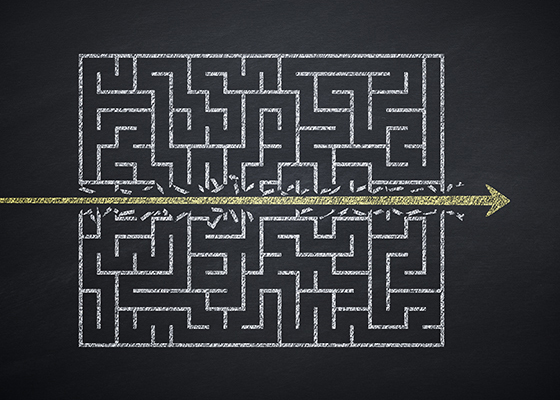Managing caries and motivating change, part 2: Motivational interviewing
How do you motivate your patients? Discover how caries risk assessments and motivational interviewing tactics can help you connect with…


Confused about dental cement? You’re not alone. Discover how to simplify cementation and streamline your practice – starting with your inventory.
When it comes to choosing modern dental materials, the goals are simple: effectiveness, safety, ease of use, accuracy and predictability. But true simplification is often easier said than done, particularly for complex procedures. And cementation remains one of the most complex – and often confusing – parts of indirect restorative procedures.
Indirect restorative procedures tend to be time-consuming, complicated and take many steps to complete. And while crown cementation only accounts for a small fraction of that time, it’s one of the most critical steps in the workflow. Mistakes during cementation can lead to a number of issues, including early restorative failure – which is incredibly costly to both practitioner and patient. But what makes cementation so challenging?
Successful cementation depends on two critical factors: isolation and cement selection. While proper isolation rests on the skills of the dentist with only a few approaches to choose from, selecting the right cement depends on a number of factors, including restorative material, substrate, indication and more. These variables alone can make the choice difficult, but the sheer number of dental cements available can make it seem insurmountable.
Cementation and bonding materials have evolved to meet the needs of modern restorative materials, resulting in many different groups of cements on the market – some with very subtle differences, even from the same manufacturer. Some require additional conditioning and bonding agents, while others are only feasible for one indication or situation. Because there are so many options out there, it can be hard to know what to use, when – not to mention, which options are going to give you the best, most predictable results. For many dentists, this leads to a massive collection of cements with overlapping indications and looming expiration dates. The question then becomes: how do you solve the cementation equation and simplify your procedure?
Have you ever checked your inventory to find you have multiple cements with the same indication? Or had to toss a bunch of barely used materials because they’d passed their expiration dates? Unfortunately, this is a regular occurrence for many dental professionals, and a major hurdle toward simplification. And while simplifying your practice entails more than just your inventory, reviewing the products you use – and don’t use – could help you get that much closer to a streamlined workflow.
By narrowing your inventory to a select number of versatile cements, you can reduce the number of overlapping products and the risk of premature expiration while helping your bottom line. What’s more, by working exclusively with a smaller set of choice products, you’ll strengthen your expertise in those materials. When you change products constantly, it’s hard to get familiar enough with them to make the most of the materials’ properties. But if you use the same materials repeatedly, you’ll get to know their unique chemistries, their pros and cons, and how to handle them most effectively – reducing risk of error and improving results.
Refining your inventory not only helps solve the age-old debate of which cement to use, but it can also reduce educational hurdles between you and your team: if everyone knows what’s on hand and how to use it, you can collectively reduce the chance for miscommunication or mistakes.
However, simple doesn’t mean easy. It’s important to understand the different cement classes and to know how to use them. With the materials available up to now, I believe every dentist should have four types of definitive cement available in the practice: a resin-modified glass ionomer, two adhesives (dual cure and light cure) and a self-adhesive resin cement.
The reduction to four types of cement has been very advantageous to my practice. Stock management is easy, I gain more experience with selected products and I still have some flexibility when it comes to choosing the type of cement for my case. Indications still partially overlap between self-adhesive and adhesive resin cement, but that’s where personal preference comes in – and, more importantly, experience with the materials. However, as materials evolve, there’s a new opportunity to simplify further, from four materials to three – with the introduction of universal cements.
As we look toward simplifying cementation, the next logical step is a universal solution, such as 3M™ RelyX™ Universal Resin Cement – which works for both self-adhesive and adhesive procedures (alongside 3M™ Scotchbond™ Universal Plus Adhesive). Combining these properties into one product not only eliminates the need to choose between multiple cements, but also reduces complexity – both in procedure and inventory. Plus, the new initiator system improves the rheology of the cement, making excess clean-up easy and helping reduce waste. Add in the fact that in a clinical setting, I found RelyX Universal Resin Cement to be straightforward and easy to handle while providing a strong bond to dentin regardless of curing mode – and you get a material class that lends itself to a modern, simplified dental practice.

Easy excess removal of 3M™ RelyX™ Universal Resin Cement after tack curing . . .

. . . resulting in clean margins after polishing.

The innovative, self-sealing automix syringe allows for hygienic storage without used mixing tip. The cement can be used with or without the dedicated 3M™ Scotchbond™ Universal Plus Adhesive.

The 3M™ RelyX™ Universal Micro Mixing Tip significantly reduces cement waste.
While cementation can be challenging and confusing, there are ways to simplify the procedure – and it starts in the stockroom. By taking the time to review your materials, you can refine your inventory, your procedure and your skillset. And the growing trend toward truly universal products opens the door to new opportunities for reducing complexity across the board. So you can make your day universally simpler.
Watch video

How do you motivate your patients? Discover how caries risk assessments and motivational interviewing tactics can help you connect with…

Caries is a complicated multifactorial disease. In this two-part series, explore how caries risk assessments can help improve evaluation and…

Zirconia may be part of your everyday vocabulary, but how much do you know about this ceramic material? Learn more…